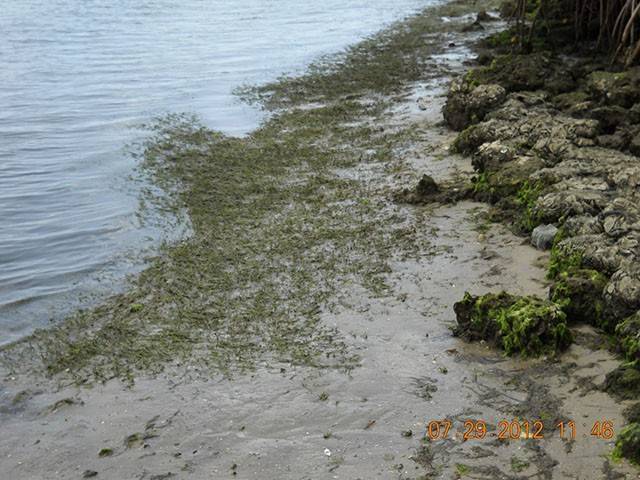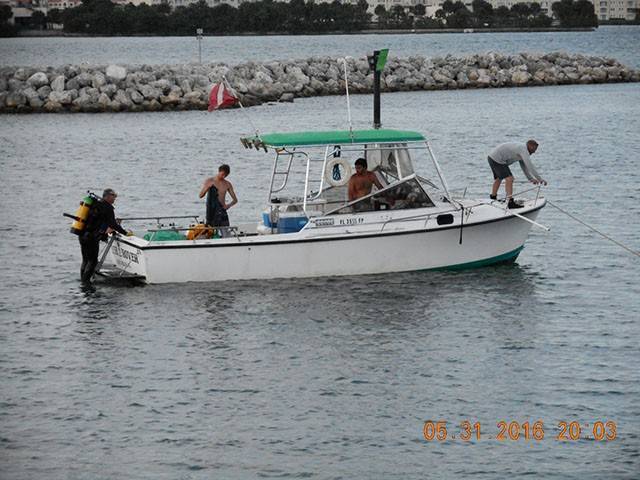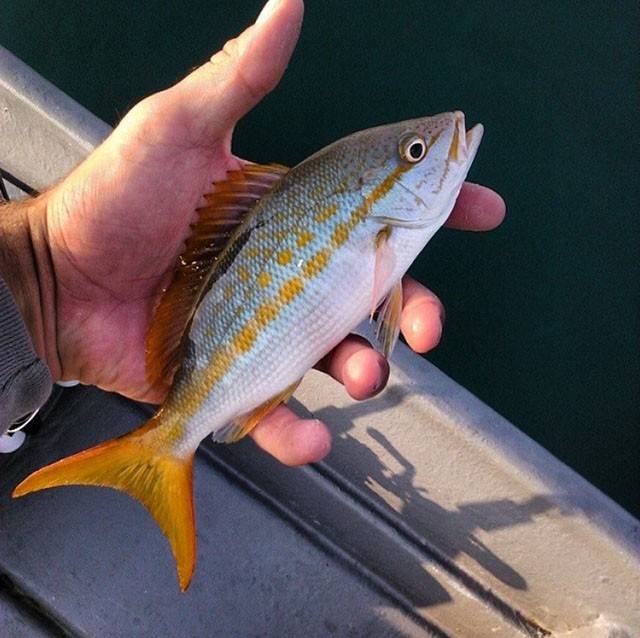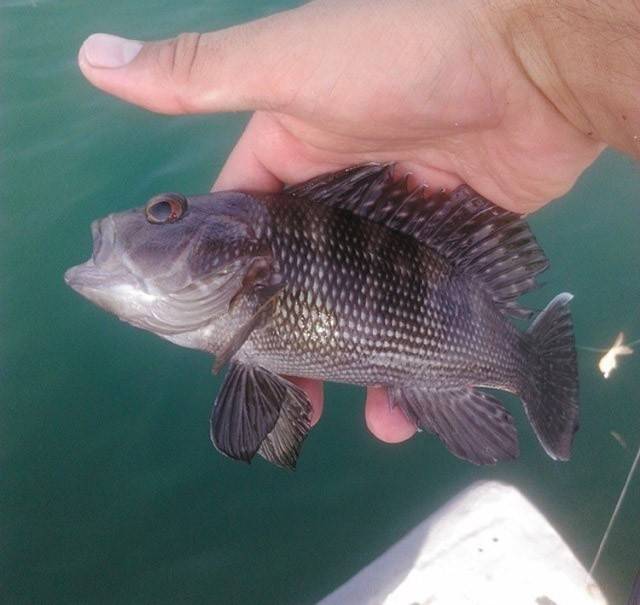
The St. Lucie County Artificial Reef Program’s Oyster Reef Restoration Program has deployed its first subtidal oyster reef (oyster modules deployed below the low tide mark). The program originated in 2005 with the help of the St. Lucie County Marine Extension Agent, LeRoy Creswell, when mat modules and bag modules were tested at eleven different locations to determine which module type would work best in high salinity environments. The program relies heavily on volunteers and has created intertidal oyster reefs (oyster reefs deployed between the high tide and low tide marks) at North Causeway Island, Jaycee Park, Spoil Island SL 18B, Riverside Marina, Black Pearl Boat Ramp, Boston Avenue, and now at the Downtown Oyster Reef site.
For the Downtown oyster reef, volunteers created more than 6,700 4-gallon oyster reef modules. Volunteers deployed 3,520 square feet of intertidal oyster reef along the shoreline before seagrasses colonized areas meant for more oyster reef. The funding agency for the Downtown Oyster Reef (South Florida Water Management District) agreed to allow the remaining oyster reefs to be deployed subtidally 25 yards from the shoreline (to avoid seagrass impacts). The County’s artificial reef contractor, McCulley Marine Services and consultant, SeaRover Services were then tasked with deploying the remaining 3,600 square feet of oyster reef in six foot depths with rapidly moving current.
The subtidal oyster reefs were designed to test whether seagrasses will grow in the vicinity of subtidally placed oyster modules. Seagrasses have been seen to regenerate near intertidally placed oyster reefs in several reefs. Both seagrasses and oysters have a net positive benefit on water quality in the Indian River Lagoon. Sand has already been found to be accumulating adjacent to the new subtidal oyster reefs. This is the first step in recruitment of seagrasses from adjacent seagrass beds. Future monitoring will be required to determine the extent of sand buildup and seagrass recruitment.
It is also hoped that subtidal oyster reefs will create inshore hardbottom for larval fish to settle and grow into adults. Many of the fish living on St. Lucie County’s offshore artificial reefs spawn on incoming tide; the resulting larvae settle in the Indian River Lagoon and develop into juveniles before emigrating via the Fort Pierce Inlet to live on offshore reefs. Juvenile fish caught in the vicinity of the new subtidal oyster reefs include yellowtail snapper, black seabass, and red grouper. In addition, post-deployment dives on the new oyster reefs have recorded nine different species of fish. In the coming years, these subtidal oyster reefs will be monitored for benthic development (seagrasses, bivalve mollusks (oysters, mussels), crustaceans (crabs, shrimp), sponges, tunicates, and other sea-life (echinoderms—sea urchins, brittle stars, and macroalgae, etc.), to determine the extent of habitat that has been produced.
The effects of these complex habitats on water quality will need to be studied. In addition to creating juvenile fish habitat, it is hoped that local researchers will obtain funding to determine the net effect of the complex community comprising an oyster reef module on nutrients in the water.
The St. Lucie County Artificial Reef Program is working hard to ensure robust fish populations on its artificial reefs and natural reefs offshore. To ensure this, creation of many different habitats that benefit all life history stages of many different species is encouraged. For more information, please contact Jim Oppenborn, St. Lucie County Coastal Resources Supervisor at oppenbornj@stlucieco.org or (772) 462-1713.
[easy-social-share]









